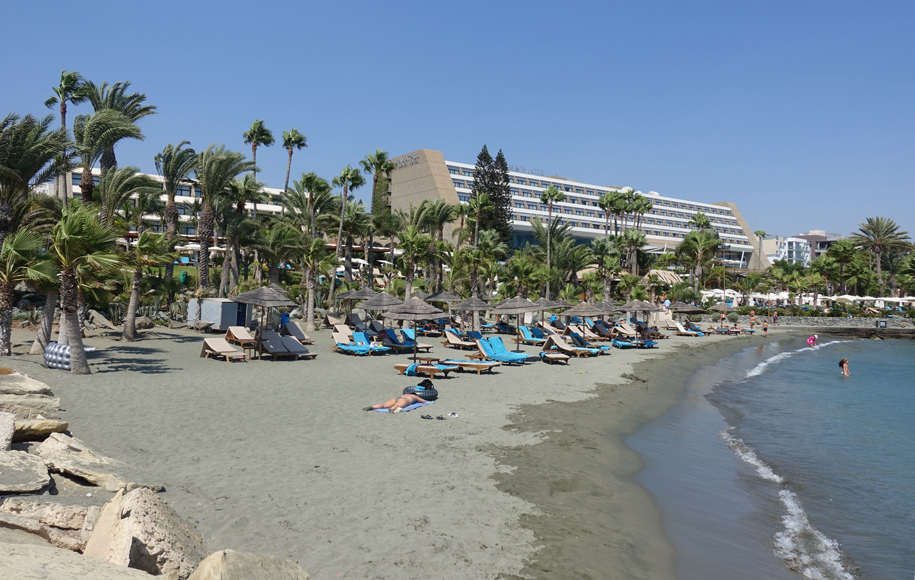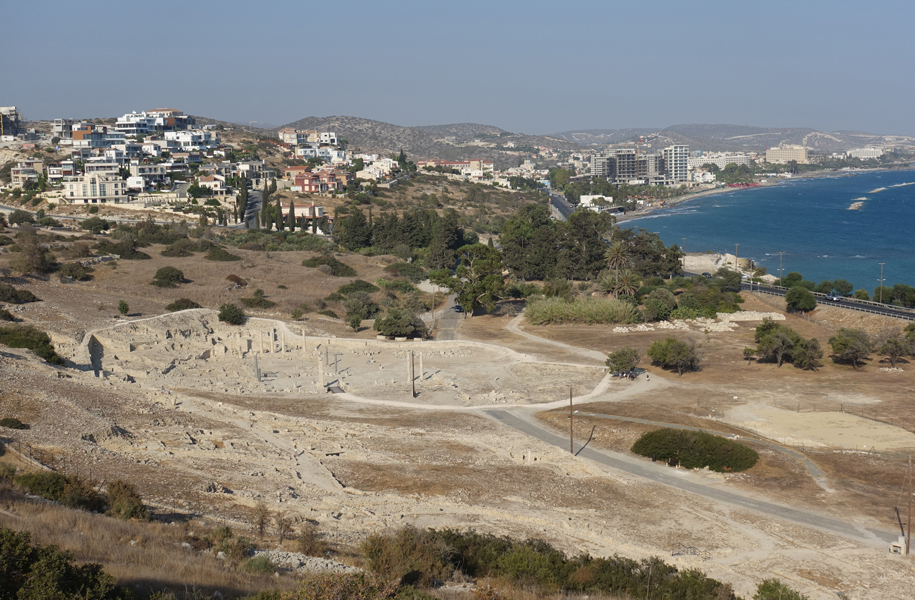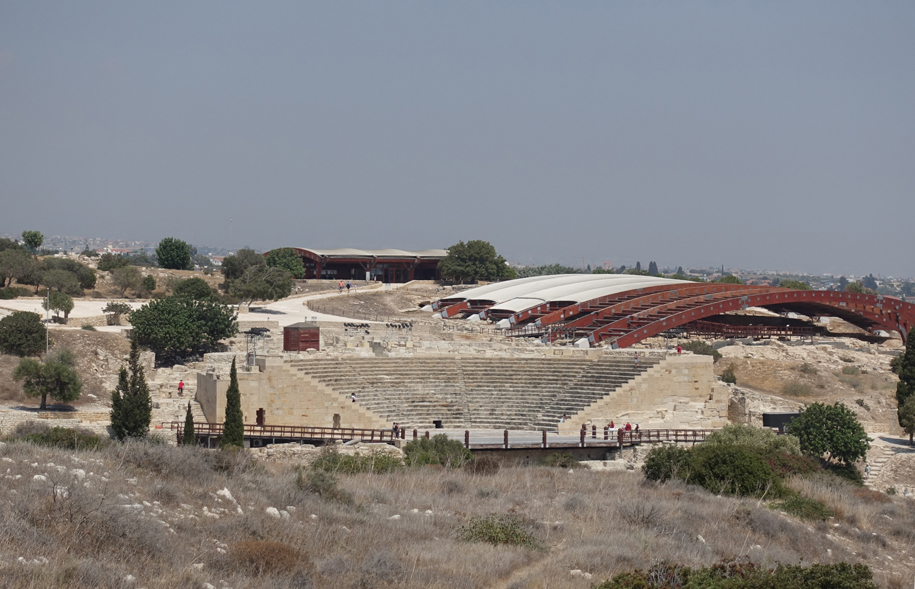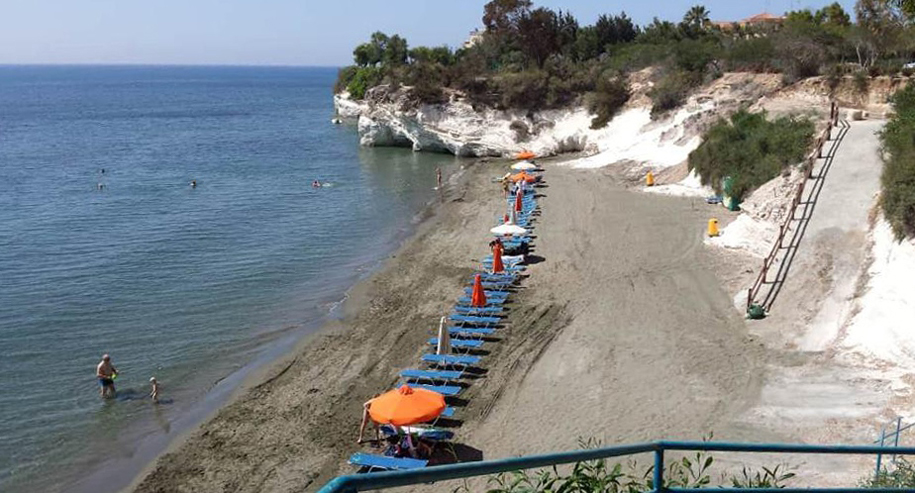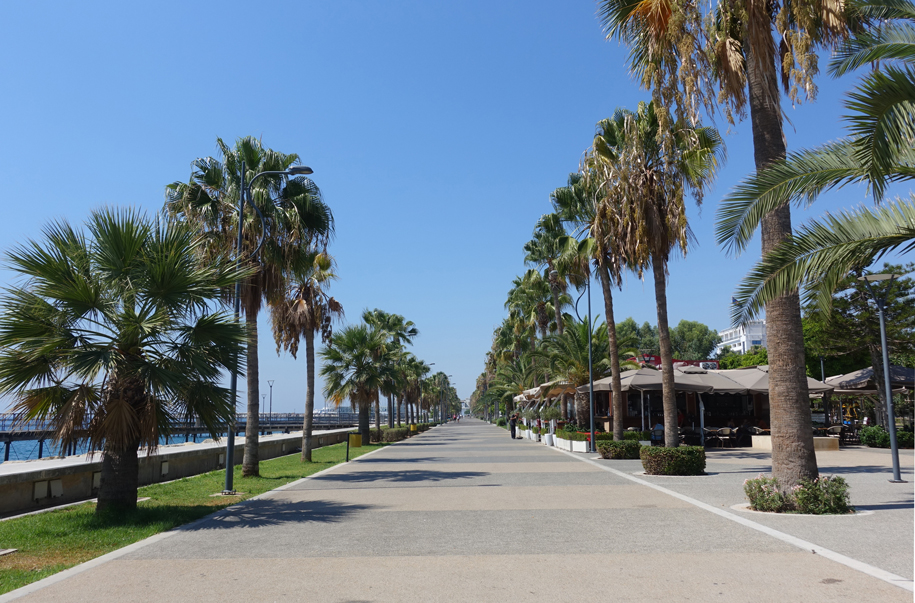
Limassol Castle, Cyprus (Lemesos Castle). Cyprus Mediaeval Museum
Updated: 17.11.2022
The castle of Limassol (or Lemesos Limassol Castle Castle, the Greek word Κάστρο Λεμεσού, Turkish - Braila as Kalesi) is a medieval Fort situated in the historical centre of Limassol near the old port of Limassol.
Archaeological research conducted in the castle, revealed that the Fort was built on the site of an early Christian Basilica (4-7 century ad) and Byzantine fortress, built in the 10-11 centuries ad Also preserved under lock and key elements, indicate the former existence of this important city Church, perhaps the first Cathedral of the city.
Although there existed earlier architectural phases of an older and larger structure of the Fort, the current building dates from the period of Ottoman rule.
According to the Scriptures, in the Church of Limassol castle in 1191 Richard the Lionheart married Berengaria of Navarre and crowned her Queen of England. For this reason, the Fort is also called the castle of Richard the Lionheart.
In accordance with these Etienne Lusignan, the original castle was erected by guy de Lusignan in 1193. The first official reference to the Fort of Limassol dates back to 1228.
Since its construction until the beginning of the 16th century castle damage was caused by the attacks of the Genoese and the Mamelukes of the city, as well as by earthquakes alternating with restorations and reconstructions.
In 1538 the Turks captured Limassol and the castle. The Venetian ruler of Cyprus, having won the castle, decided to demolish it in order to avoid possible capture. After the acquisition of the Ottoman Empire Cyprus in 1576, the remains or part of the remains of the castle were incorporated in the new Ottoman Fort, whose construction was completed in 1590.
In subsequent years, the part of the castle was converted into a prison, which it remained until 1950. After transferred to the Central prison in Nicosia, the castle was declared an archaeological monument and transferred to the Department of antiquities. The castle was reconstructed and restored.
Currently, Limassol fortress is a small rectangular building consisting of two ground and basement floors + roof on which you can climb.
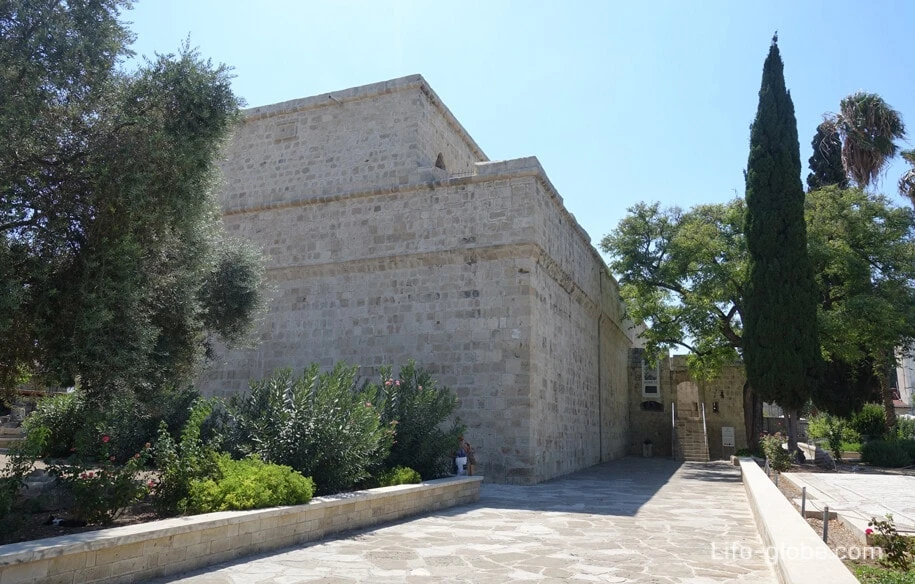
Museum Limassol castle
In the walls of the castle is the Cyprus Medieval Museum (Cyprus Mediaeval Museum). On three floors the Museum presents exhibits that tell the historical development of Cyprus, its economic, social and artistic evolution, as well as the everyday life of the people of the island from the 3rd to the 18th century ad.
Several exhibits can be seen in the open area near the castle, the view of which is free (free).
The entrance to the Museum is via the main staircase, up which are near the cash register. The entrance ticket costs 4,50 Euros. Opening hours of the castle: Monday - Friday from 08:00 to 17:00, Saturday - 09:00 to 17:00, Sunday - 10:00 to 13:00 hours.
Attention! Opening hours and entrance fees may change, please check before visiting.
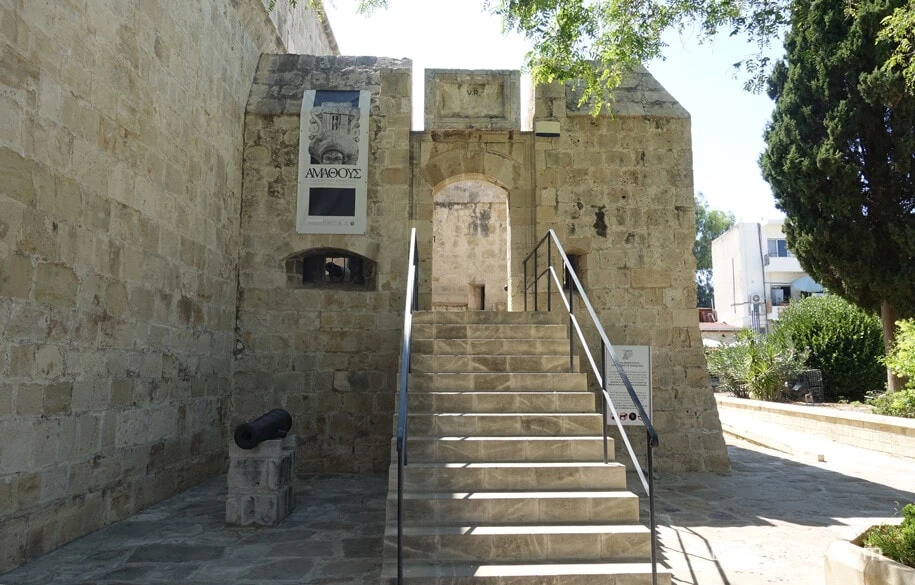
The first floor of the Museum in the castle of Limassol
Here you can see 17th and 18th century cannons and cannonballs.
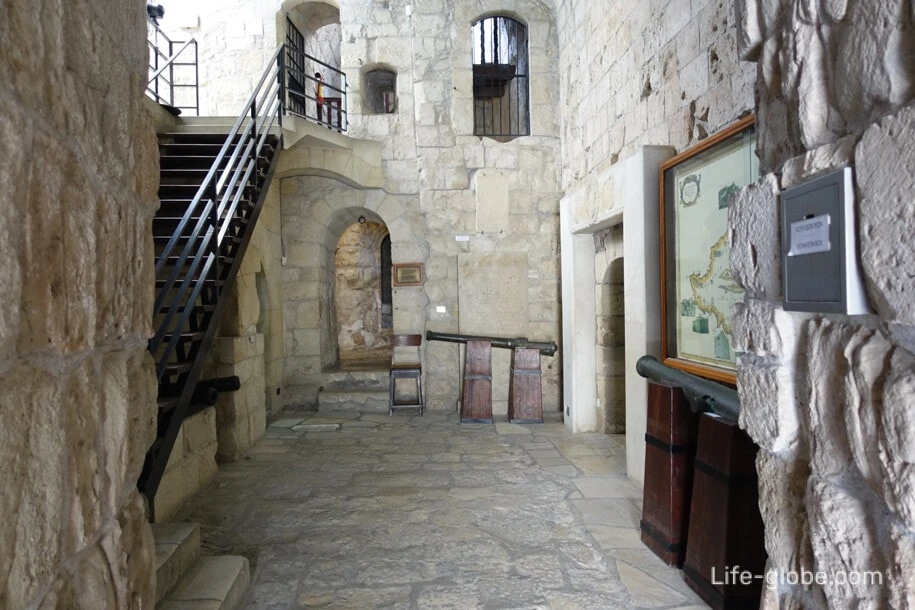
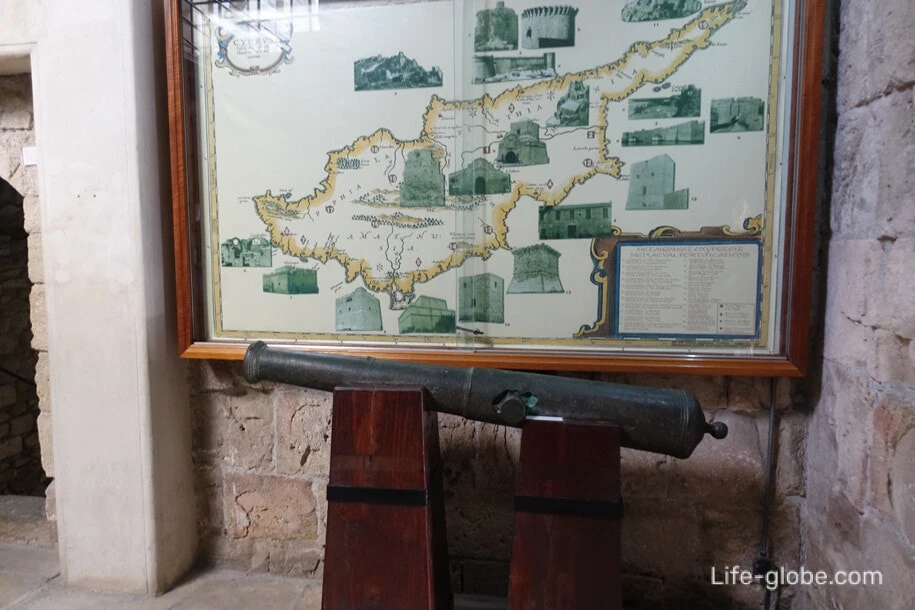
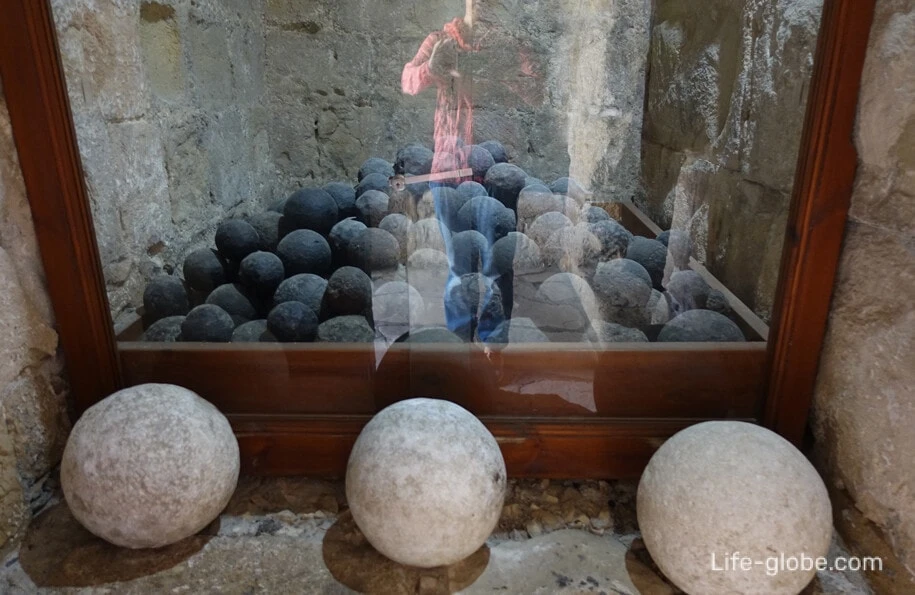
In the hallway and small conference rooms (niches) on the first floor displays:
stone carved headstones and the Central exhibit - part of the sarcophagus of Adam of Antioch, Marshall of Cyprus, Nicosia 14th century;
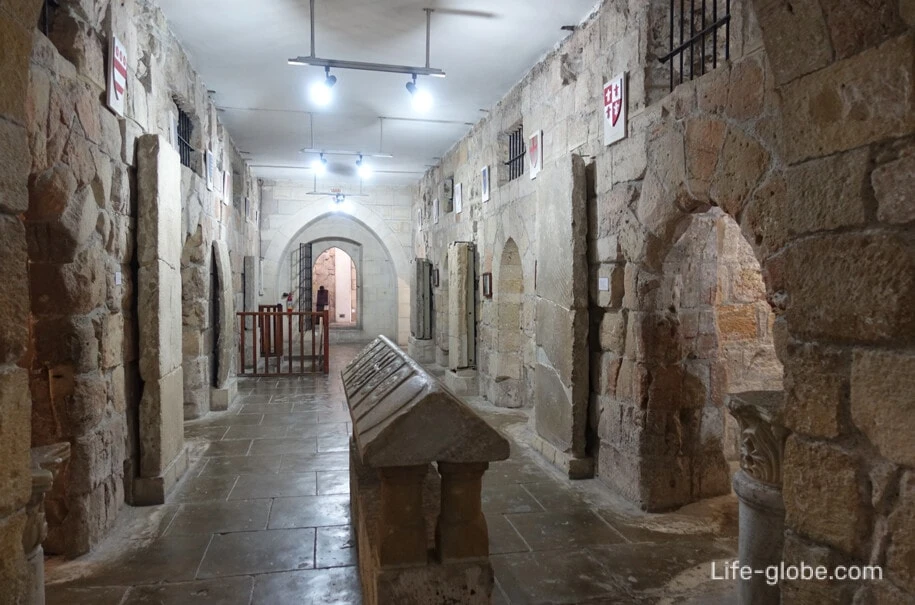
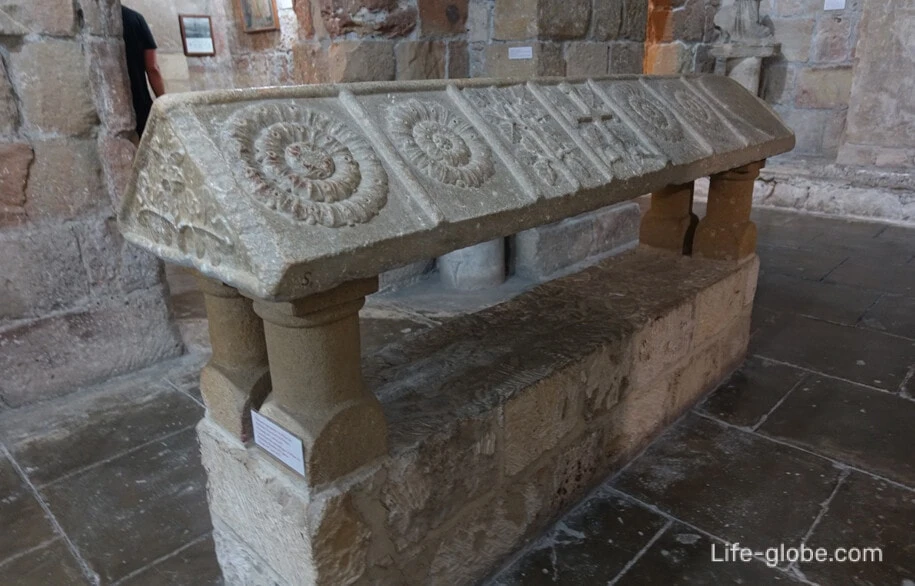
- part of the Augustinian order of the Church in Nicosia (the mosque of America) of the 15th century;
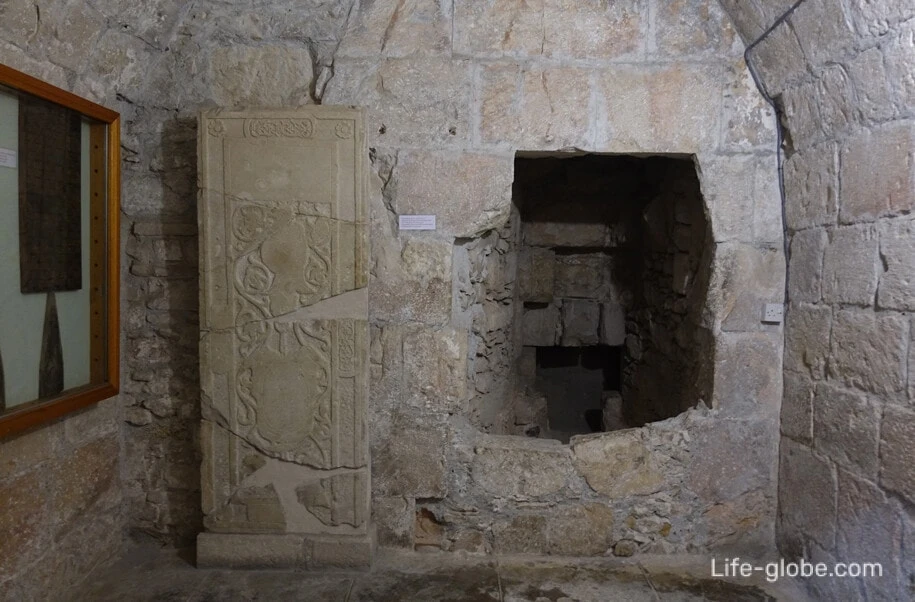
- boards with a painted coat of arms with a wooden roof Church in Pedoulas 13-14 century and wood carvings 17th - 18th century;
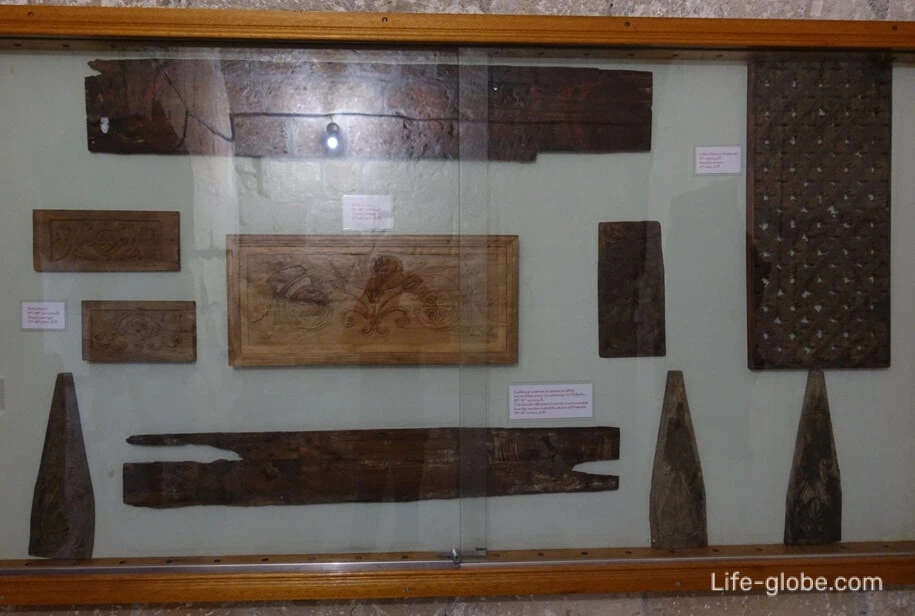
- part of the decor of buildings of unknown origin age 6;
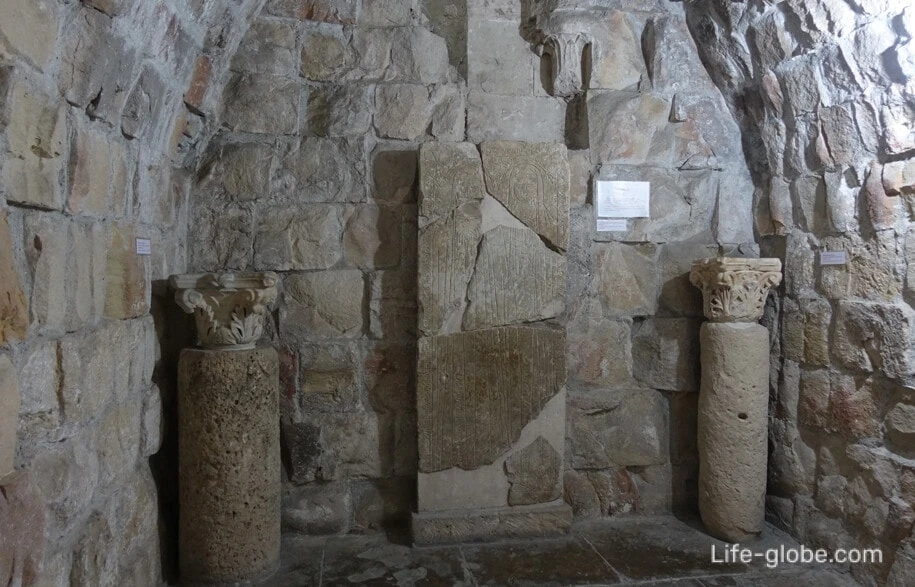
- gravestone of Jacobus of Orrisa of Nicosia 16th century and a copy of part of the mural paintings of the 14th century;
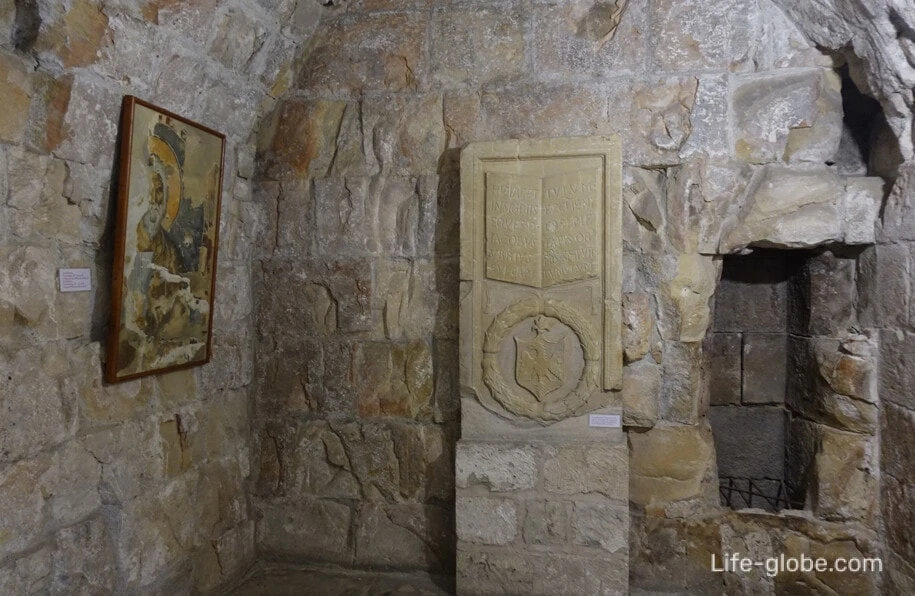
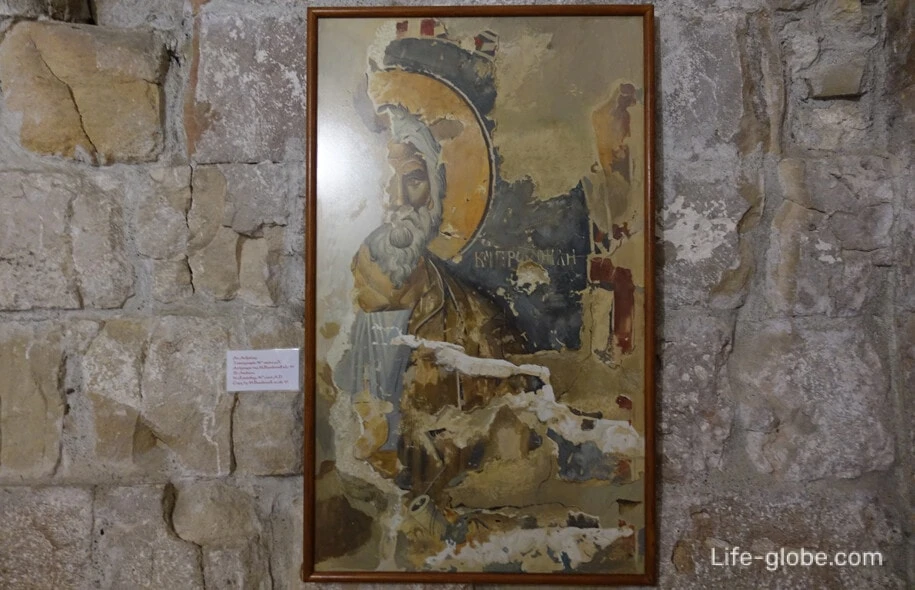
on a grave stone Hada de Vis, of the Augustinian order of the Church in Nicosia 1350 and sculpture "angel" of the 15th century;
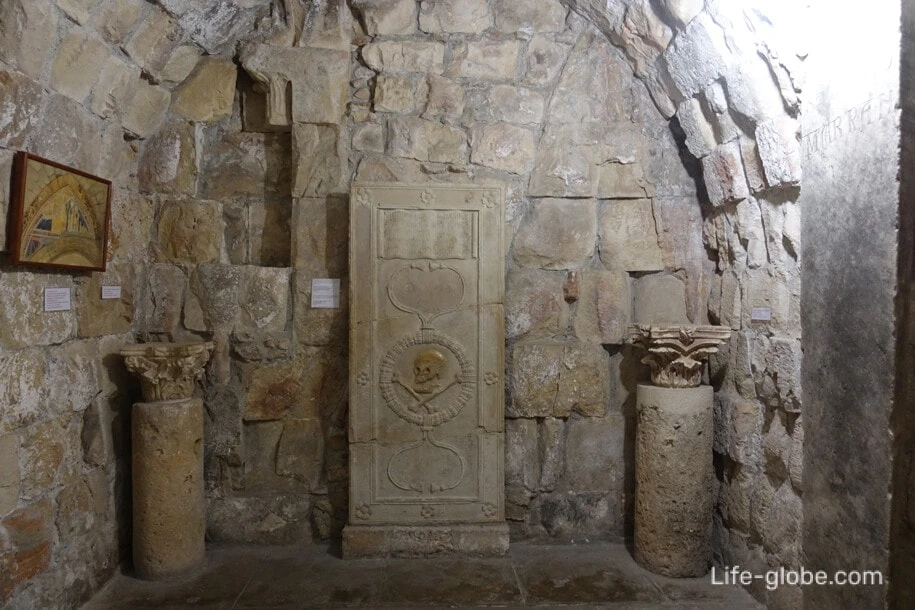
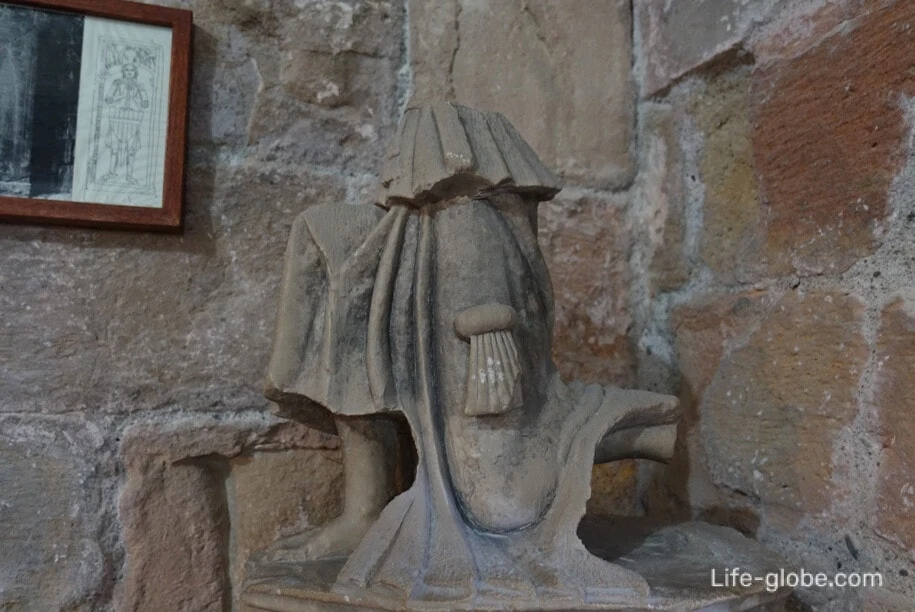
and also, tombstones, parts of sculptures and drawings from Nicosia.
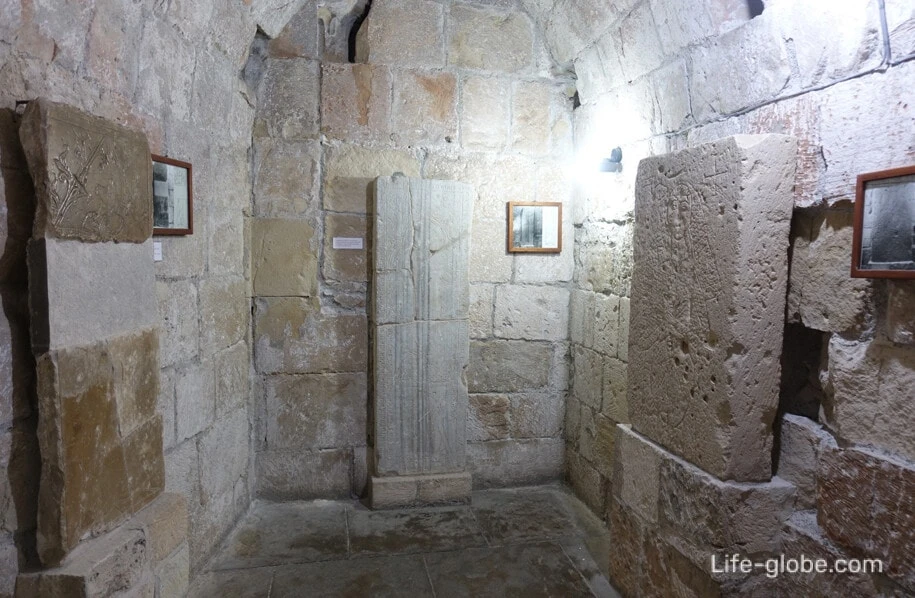
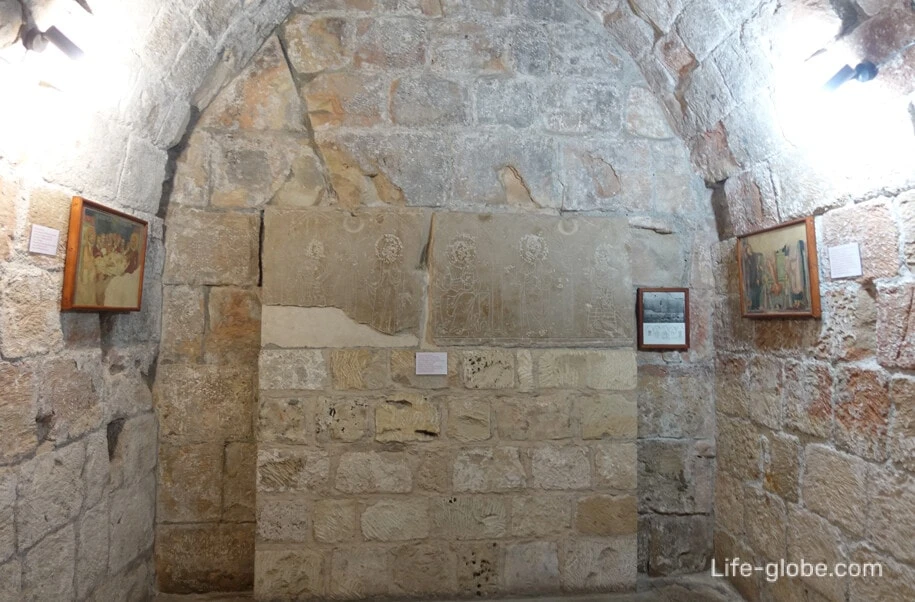
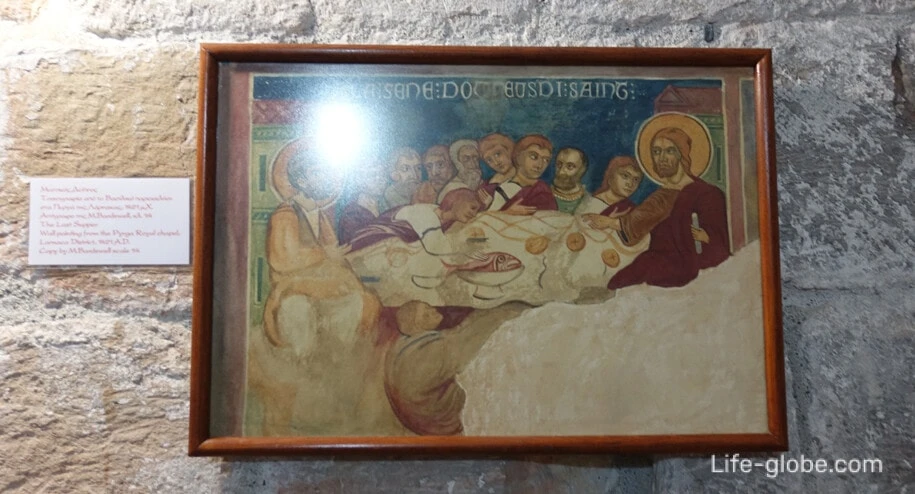
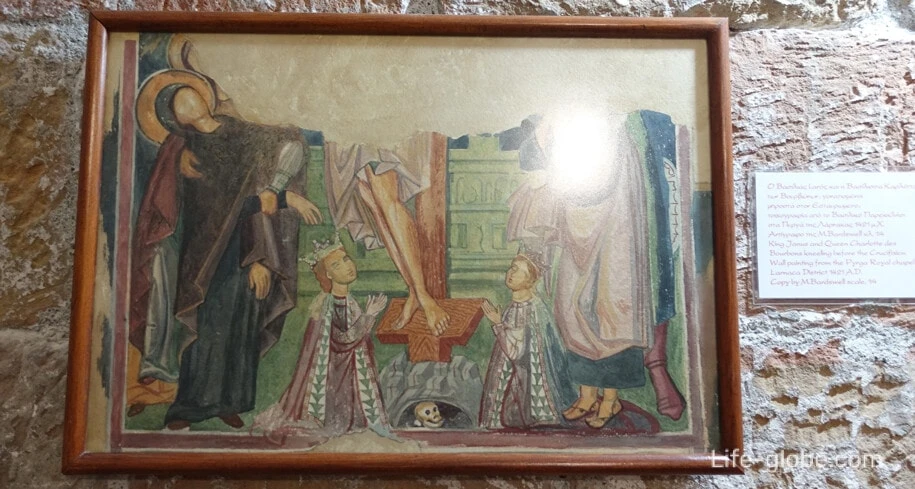

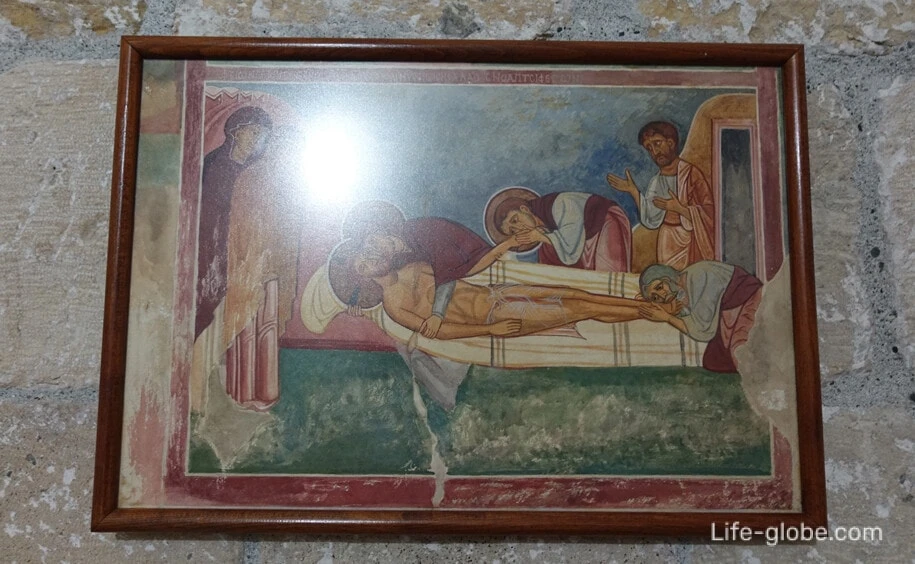
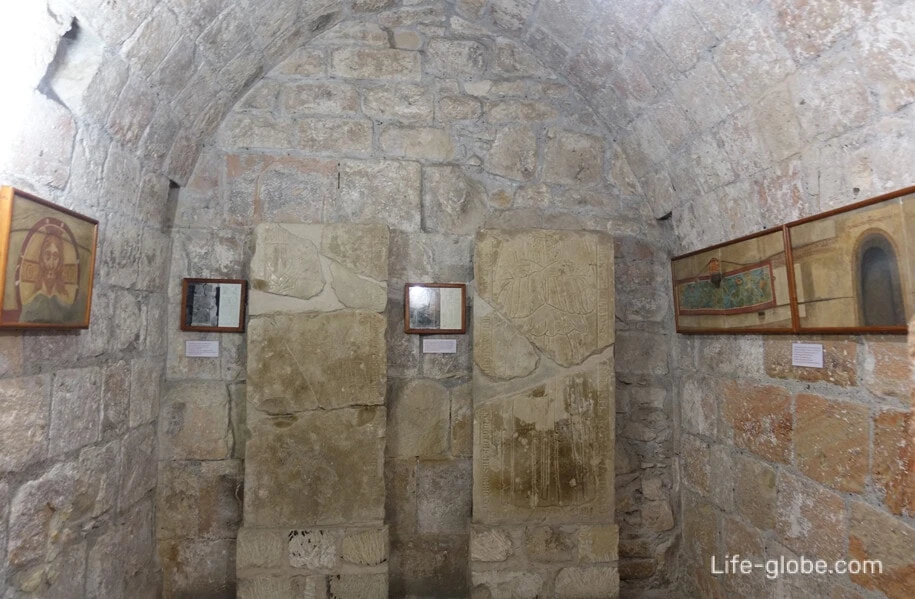
The ground floor of the Museum in the castle of Limassol
In the main hall of the ground floor presents historical photographs, decorations, tableware and household utensils as well as tombstones.
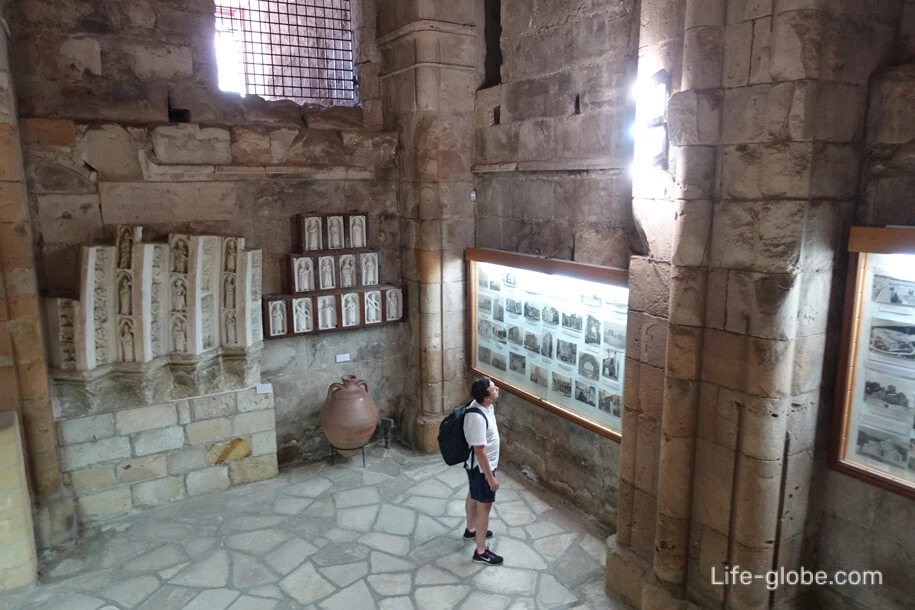
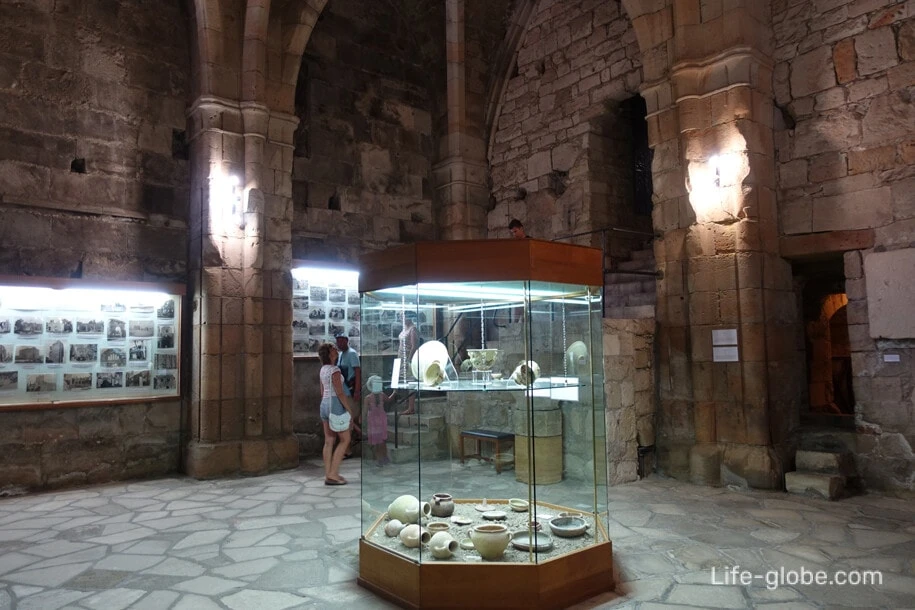
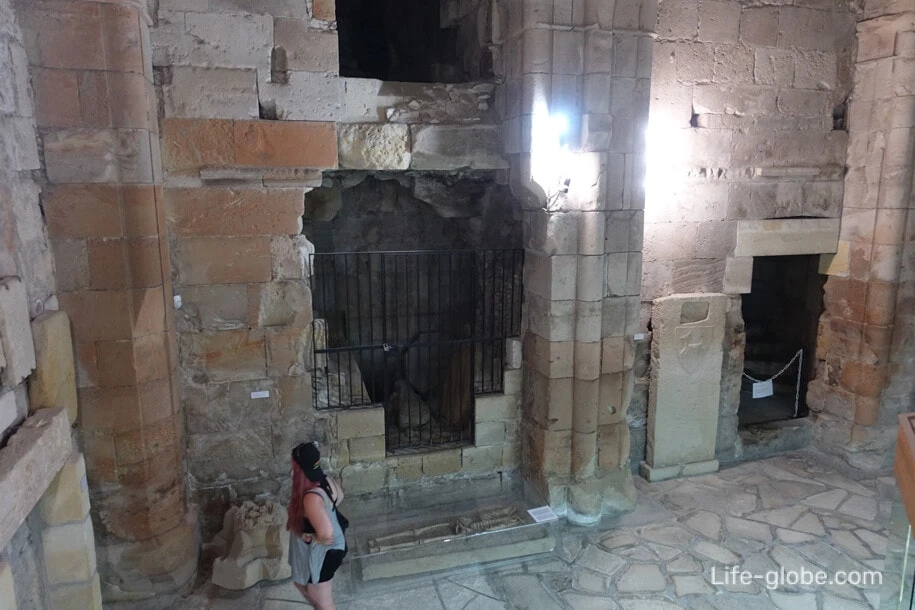
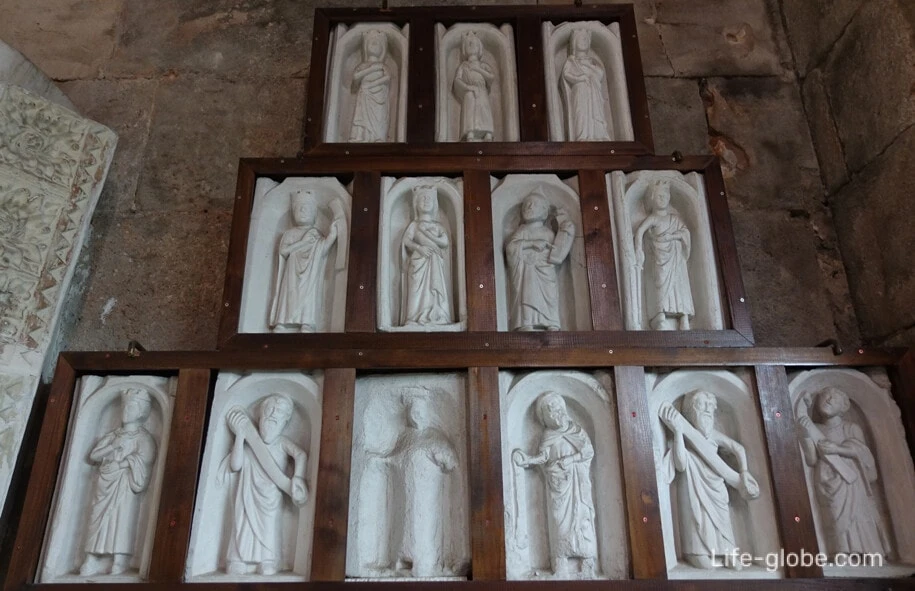
The skeleton, which was found during the excavation of the ditch of the Bastion Podocataro in the Venetian walls of Nicosia. The head and hands of the skeleton were not found. Most likely, it was the soldiers who were mutilated and beheaded when the Turks entered the Nicosia after the siege of the city in 1570.
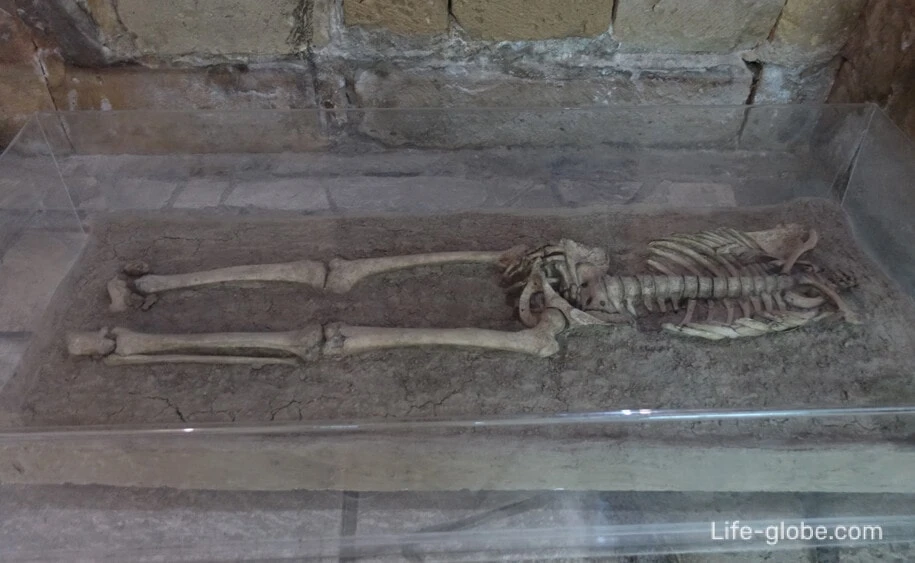
Along the narrow corridor of the ground floor is a collection of Frankish and Venetian stone carved gravestones depicting figures of the deceased monks, knights and aristocrats with their coats of arms, attributes, and brief epitaphs.
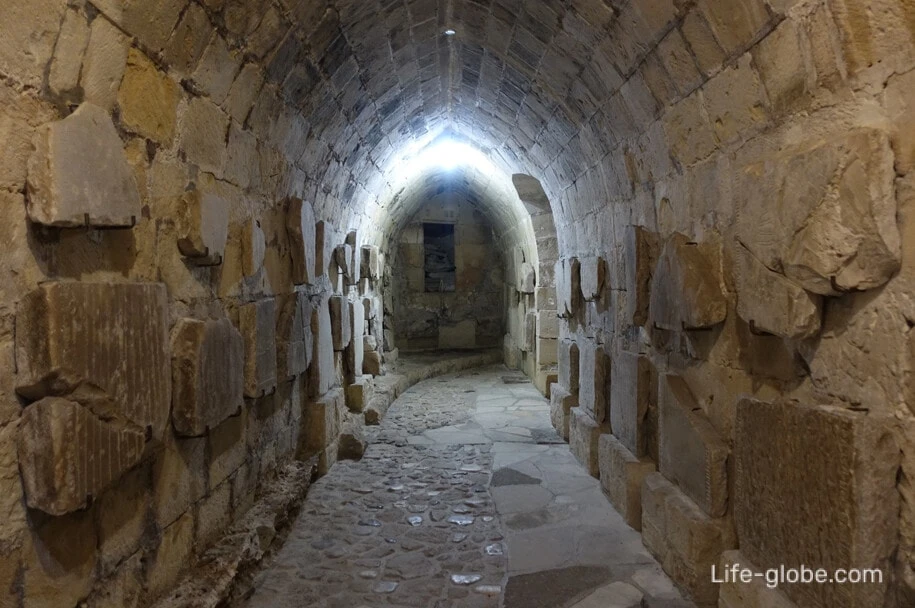
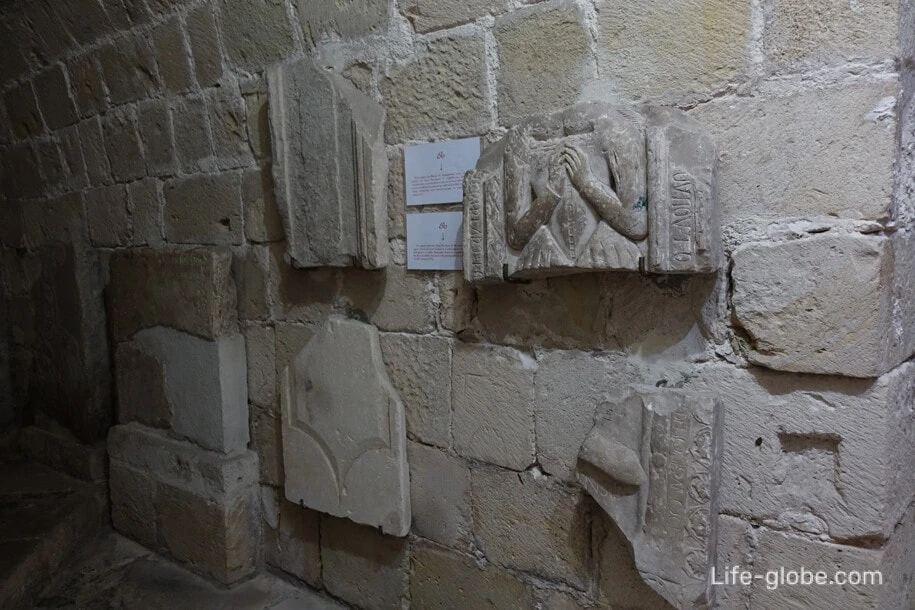
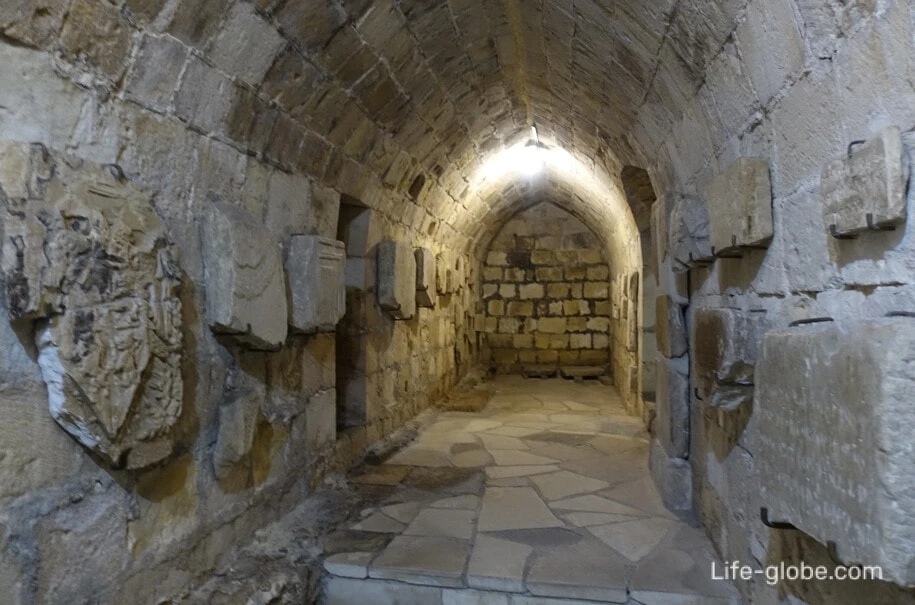
Cemetery the podium from the tower of the early Christian or early middle Byzantine period.
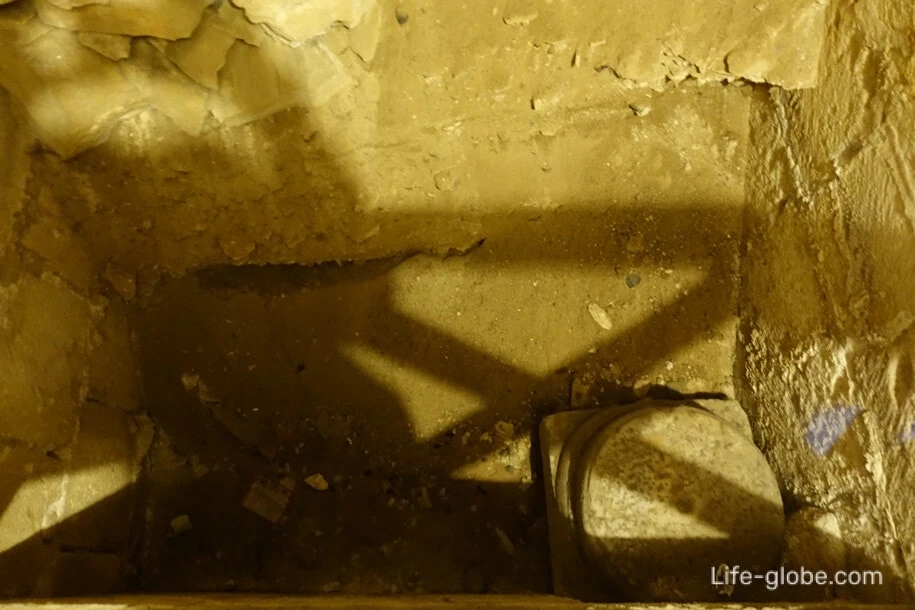
The second floor of the Museum Limassol castle
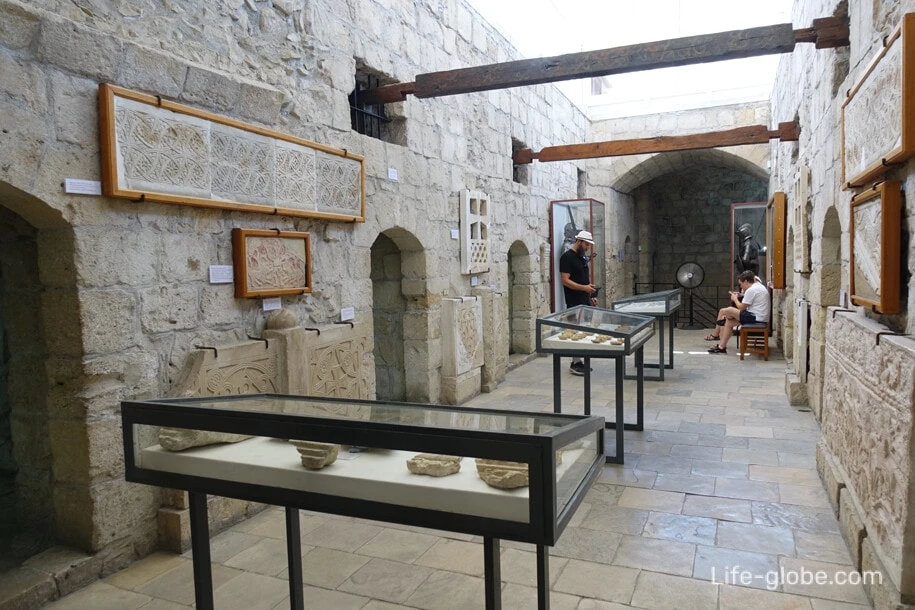
On the second, top floor of the Museum presents:
- knight armor, a collection of medieval weapons;

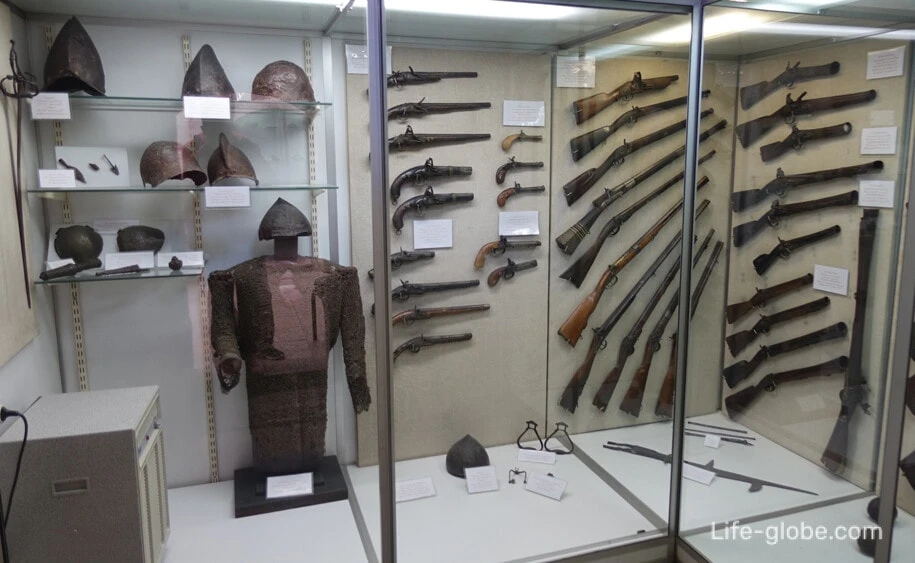
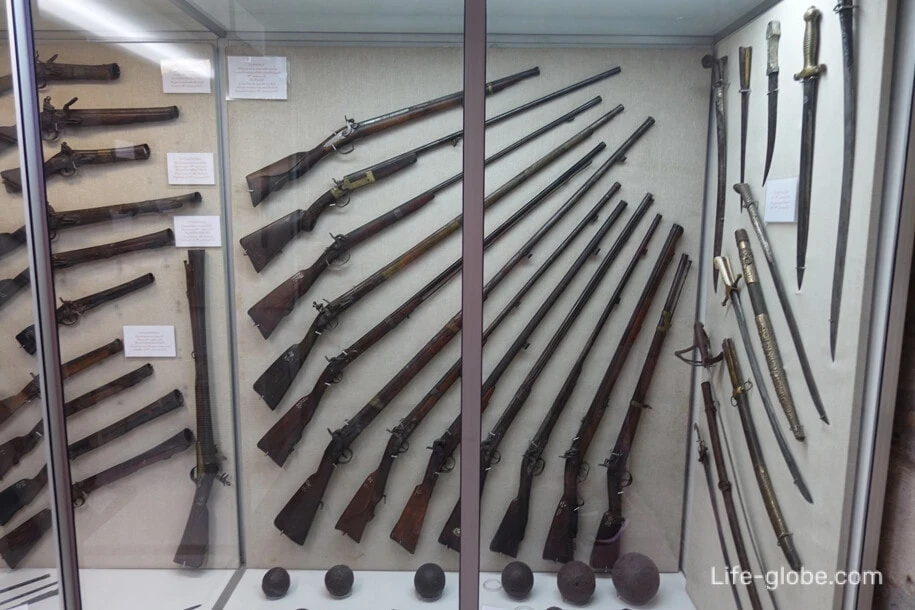
- collection of coins ranging from 610 until 1861;

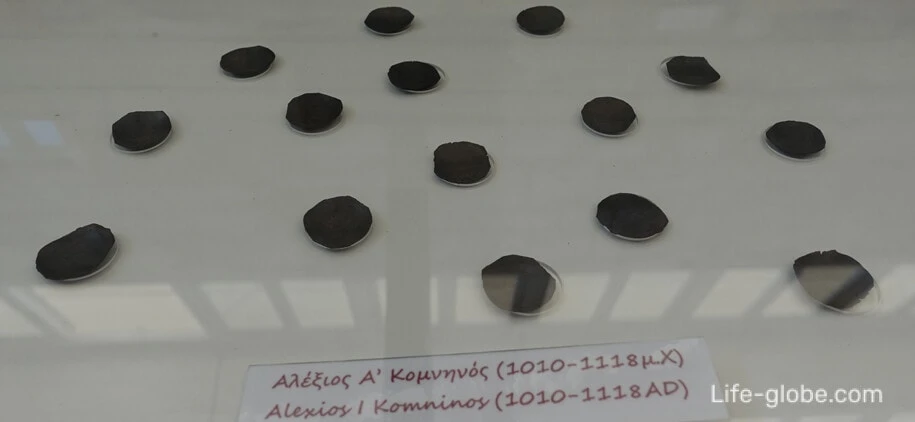
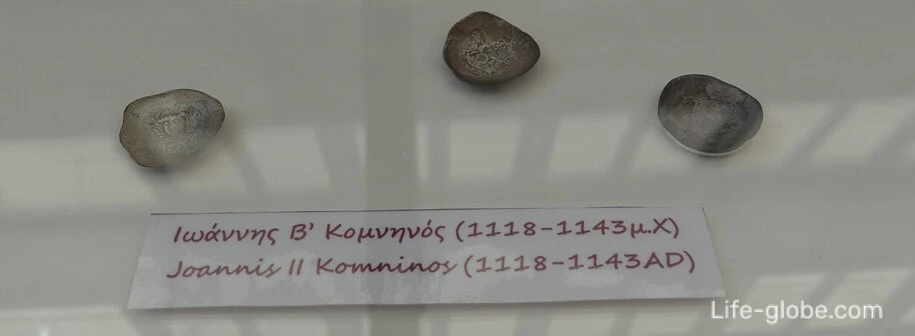
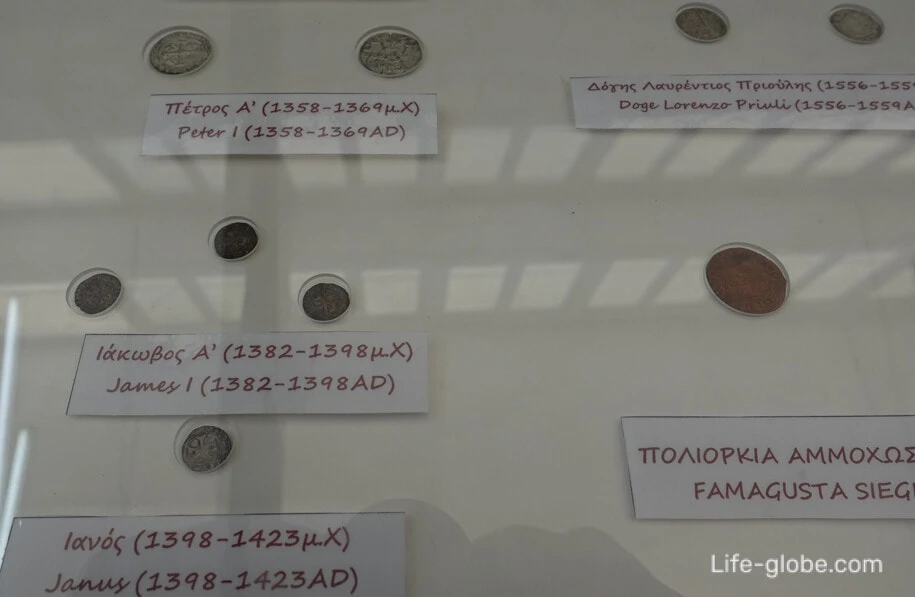
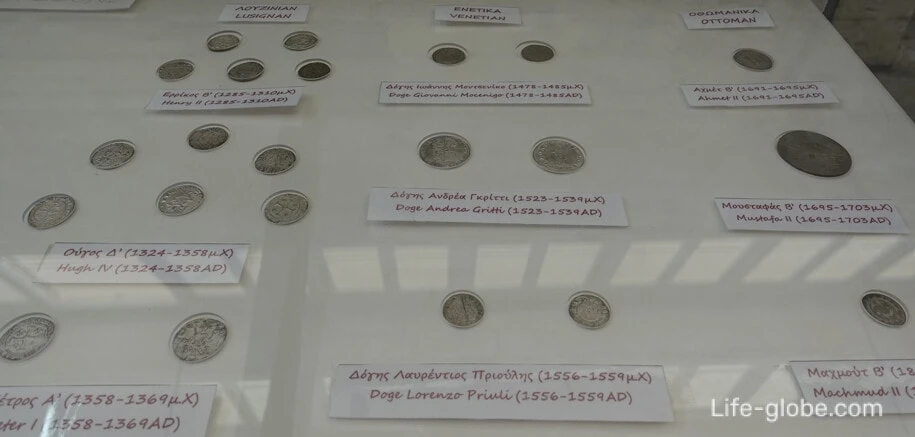
marble carved fragments of an early Christian Basilica and medieval pottery, domestic utensils, religious items and other household items and daily life.
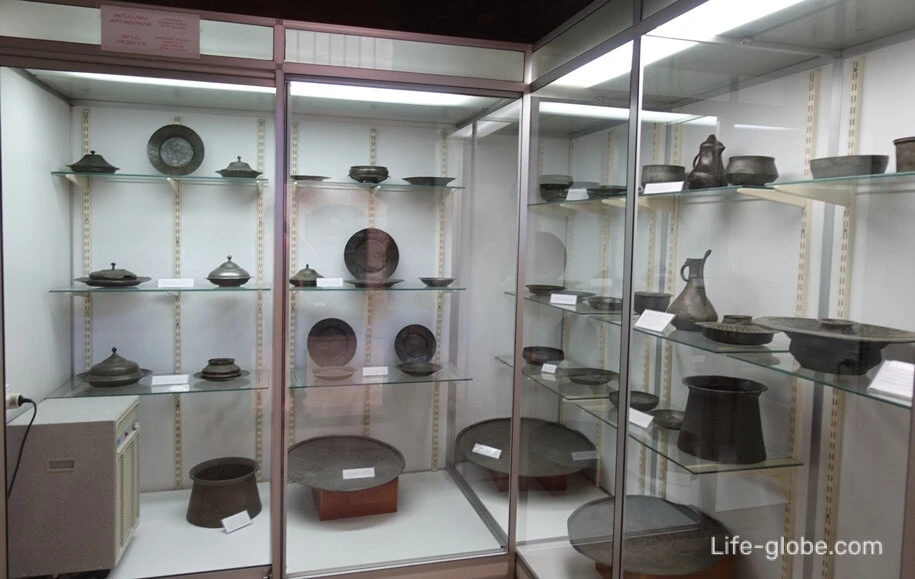

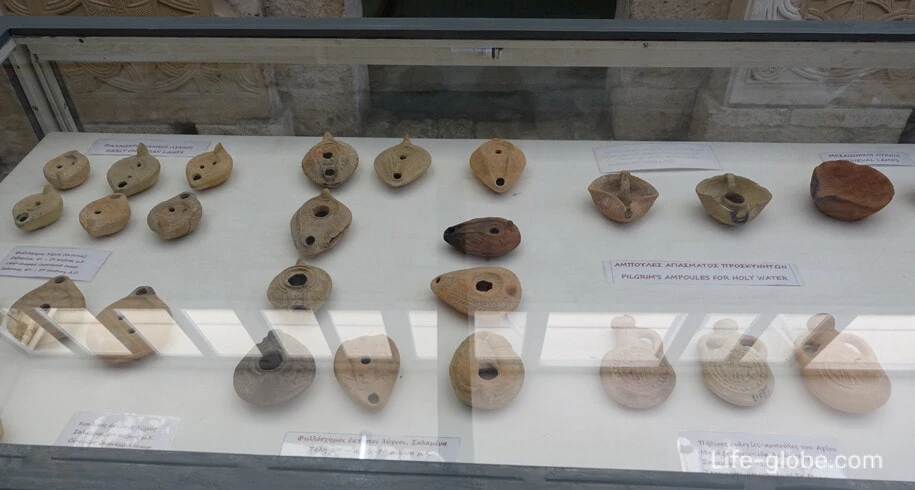
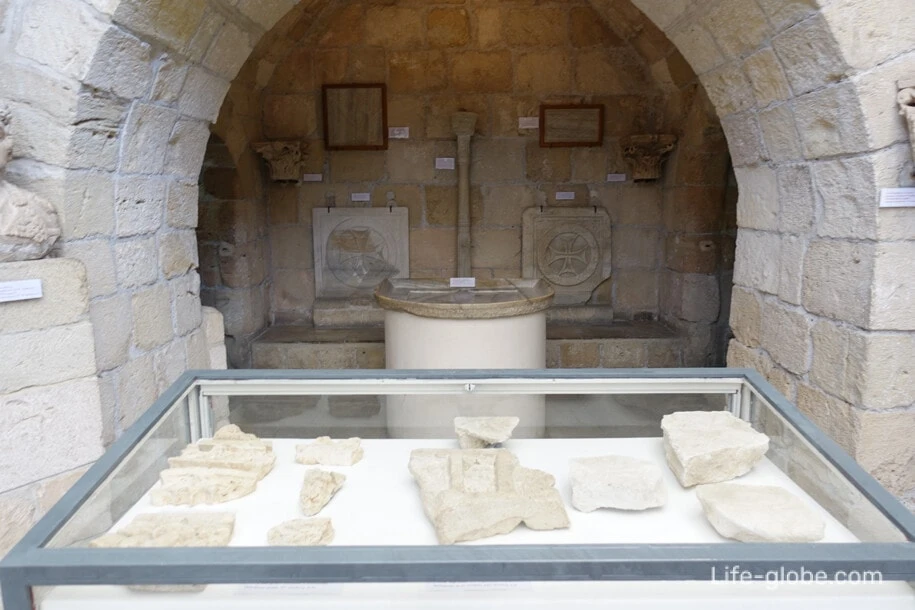

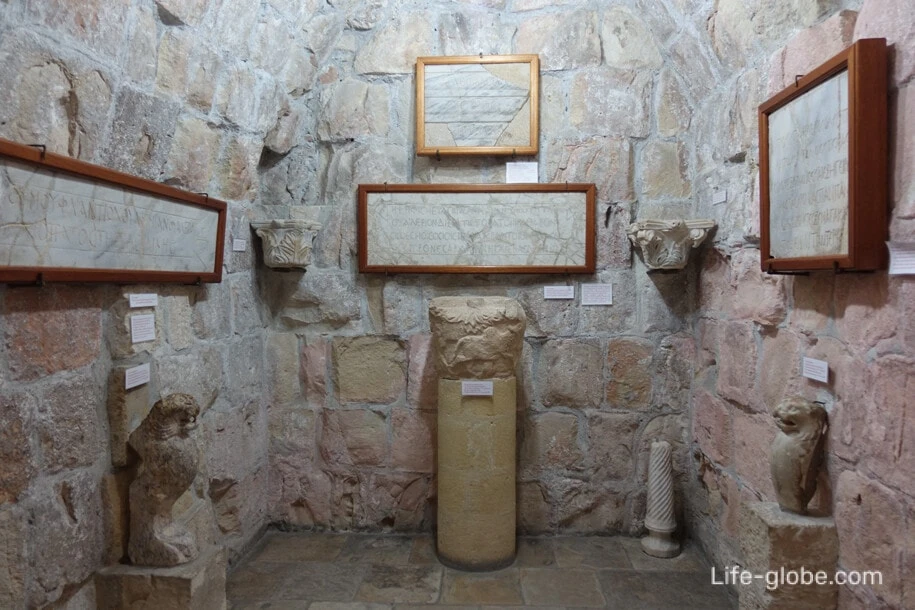
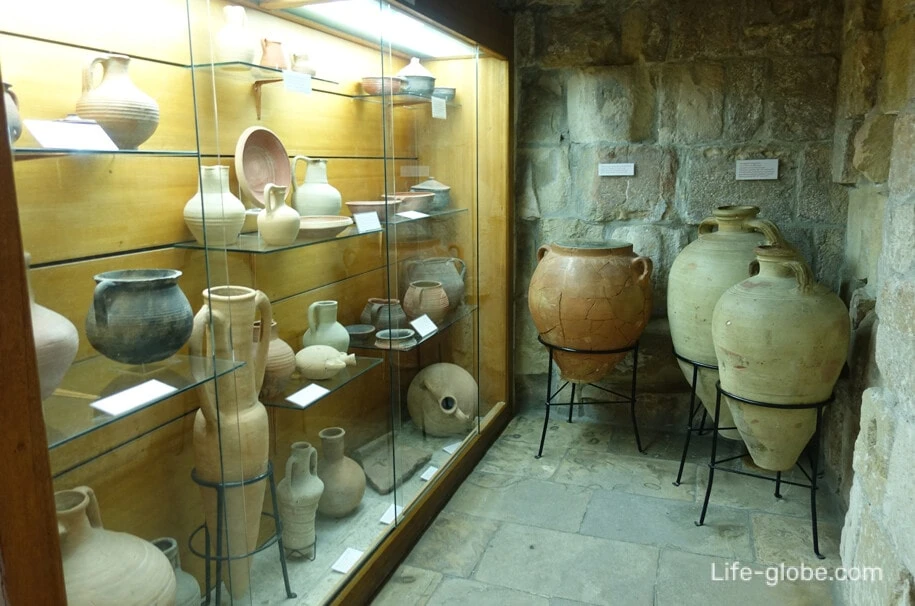
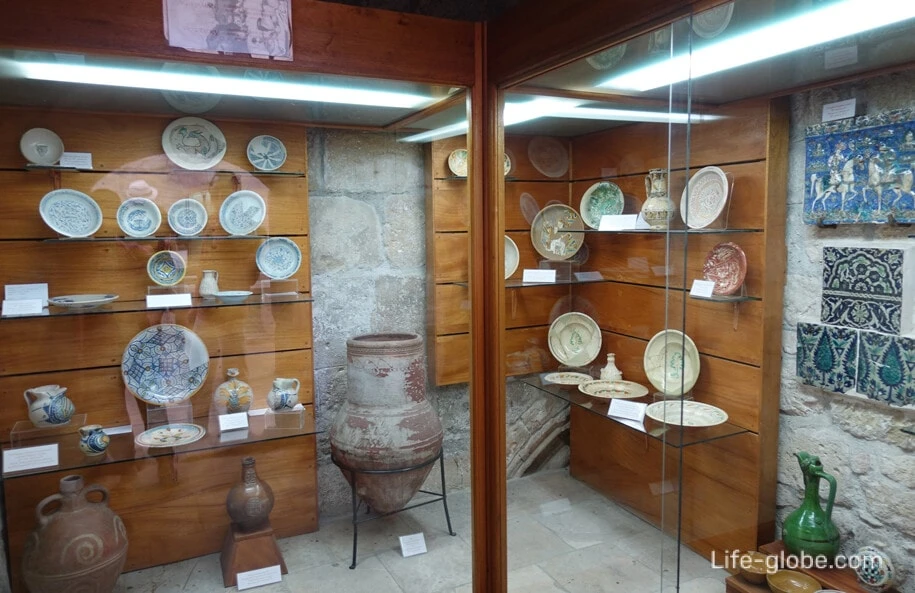
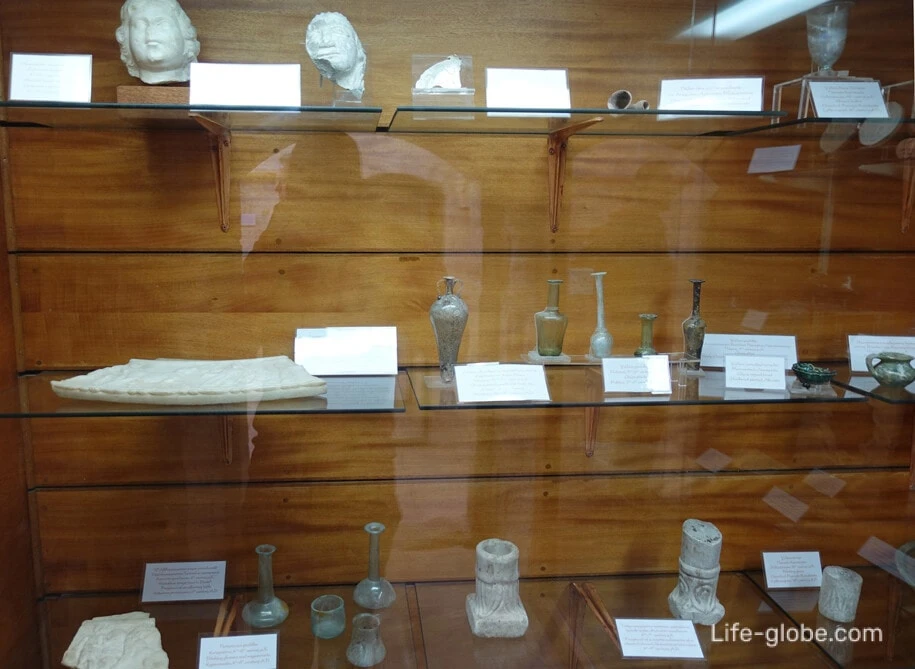

The roof of Limassol castle
You can climb to the roof and see the surroundings (360 degree view).
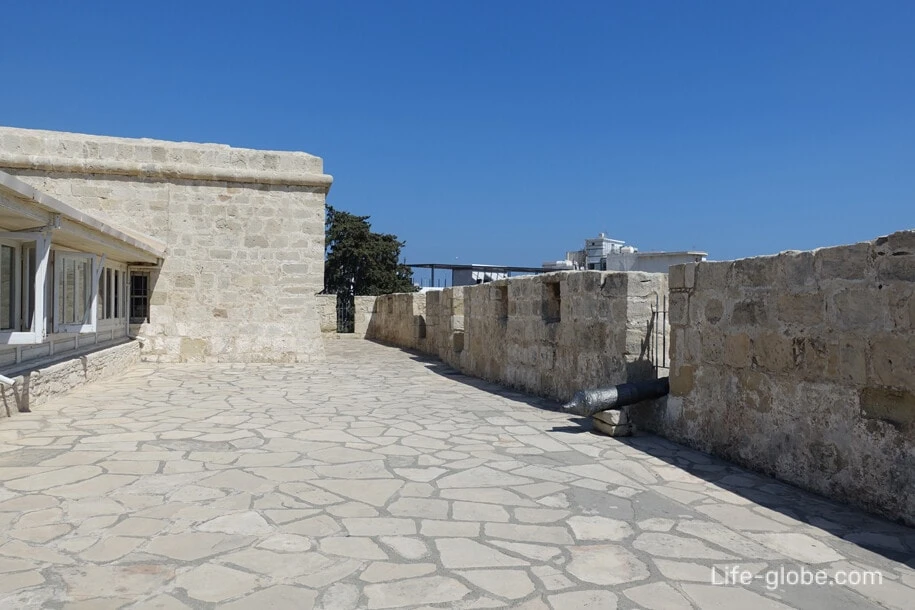
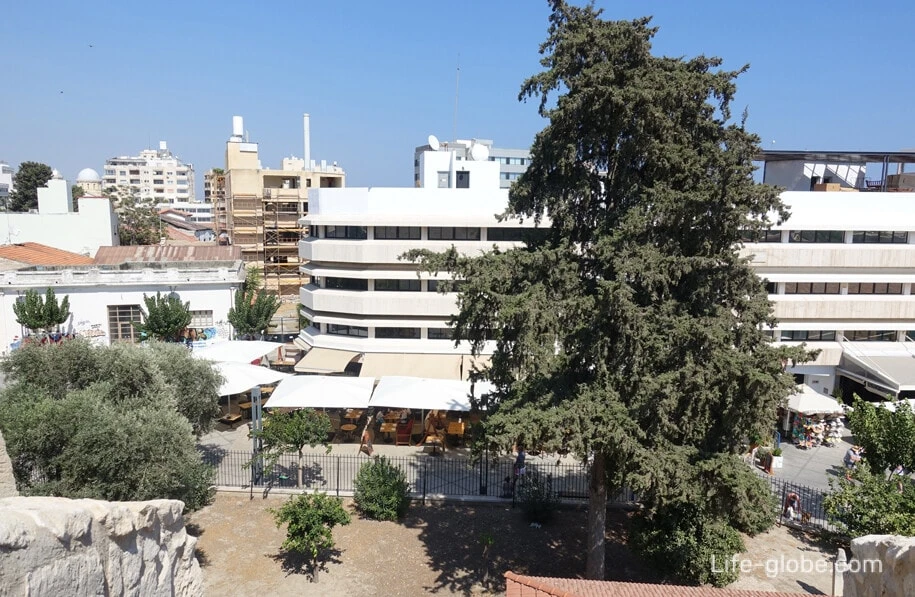
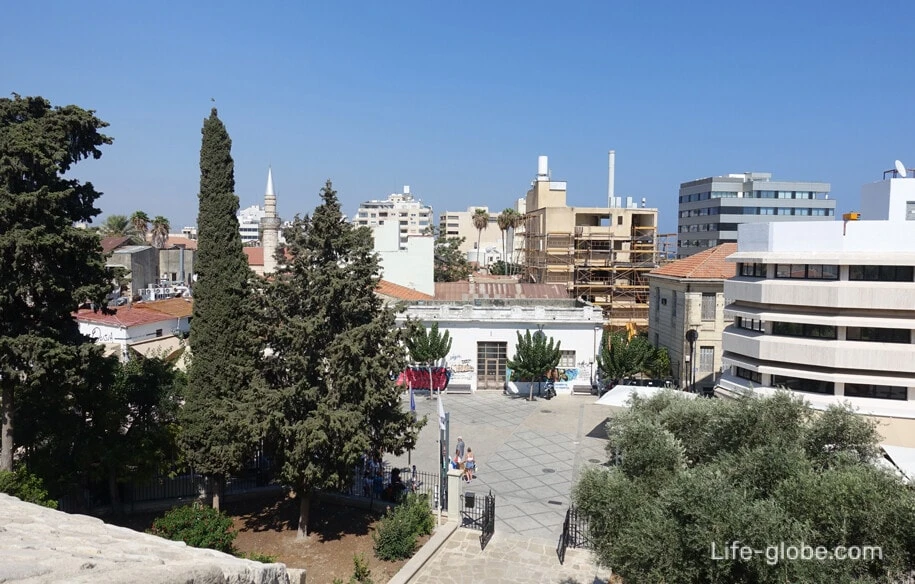
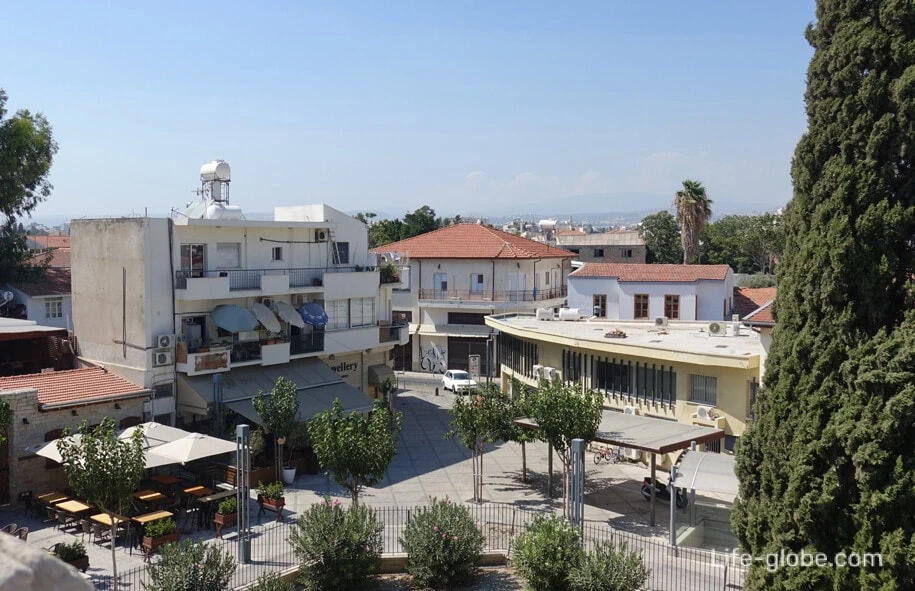
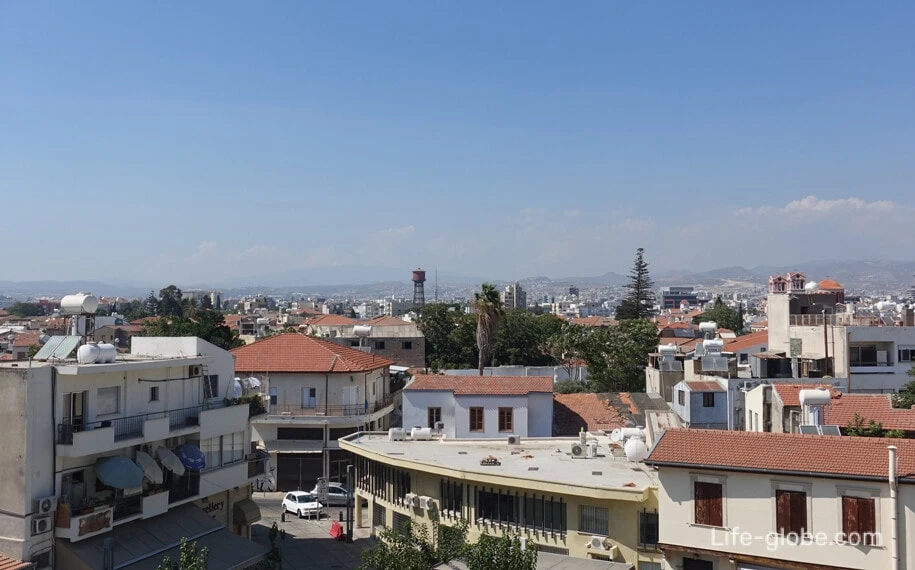

The courtyard of Limassol castle
In the yard of the Fort:
- mosaic, parts of columns and other elements;
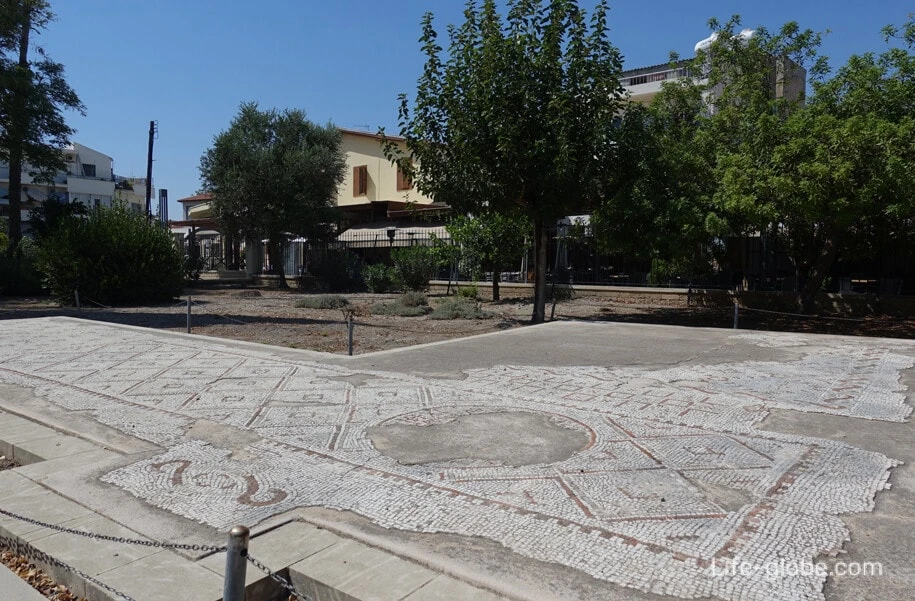
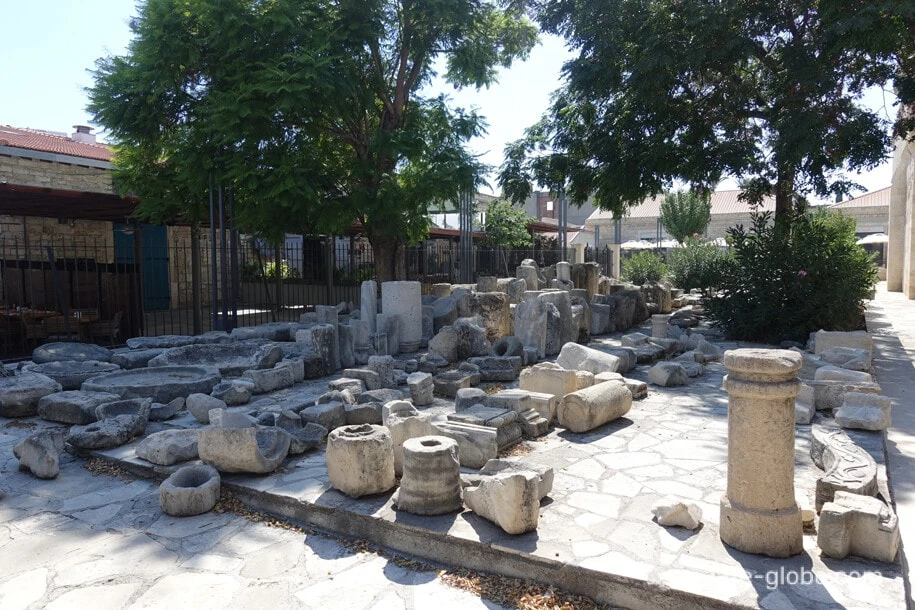
- reconstruction of press for the pressing of olive oil used in the Byzantine period 7-9 century.

share



